Workleisure Travel and the Workcation are Here to Stay
As the world continues to adapt to the remote-hybrid work model, a new trend is emerging in the travel industry: workcations. These “workleisure” experiences blend business with pleasure, offering travelers the opportunity to work remotely while exploring new destinations. The rise of workcations presents an exciting opportunity for destination, attraction, and place marketing professionals across the American South to tap into a lucrative market. In this blog, we’ll delve into how Southern destinations can position themselves to attract and accommodate digital nomads seeking workcation experiences, leveraging Tennessee’s success as a prime example.
Are People Still Working from Home in 2025?
The short answer is, yes. They are. According to Gallup, in November 2024, 55% of remote-capable employees in the US worked in a hybrid model. Of those, 26% were exclusively remote. While this statistic only addresses the slice of workforce that enjoy “remote-capable” jobs, that is still a sizeable portion of the population. Large employers forcing return-to-office policies or RTO continue to face some pushback from employees, as well as headwinds in a still-strong hiring environment.
The post-COVID 19 shift to remote-hybrid work has transformed the way people approach travel, with many embracing the flexibility to work from anywhere. According some recently cited surveys, over 80% of remote workers expressed increased interest in taking a workcation. Many are coming around to the idea, out of a desire for a change of scenery and the opportunity to explore new destinations while staying connected to work. Basically, people are waking up to the reality that if they CAN do work from anywhere, why shouldn’t they actually work… from anywhere?
The Southeast is a Prime Location for Workcations and Staycations
This growing trend presents a significant opportunity for Southern destinations to capitalize on the “workleisure” travel market and boost tourism revenue. Tennessee has been out-in-front on this opportunity, with the Tennessee Department of Tourist Development posting engaging website content and guides as far back as 2021. Like many Southern states, cities, and counties, Tennessee is lucky to have a great mix of natural beauty and renowned hospitality. Picturesque locations like the Great Smoky Mountains offer tranquility and a sense of escape.
And many regional businesses are doing a smart job of capitalizing on that. Google “workcation in the Smokies” and you’ll see a number of search-engine-optimized articles. Some highlight how best to be a “digital nomad” while exploring the region. Others offer discounts on cabin bookings and amenities, or advice on how to “work remotely” while going off the grid. Smart marketers are investing in tailored SEO and content that taps directly into this rising interest. Are you doing the same?
For Workcations, Location Matters…
Tennessee’s location as a bridge between Midwest and South, East and West, has helped it thrive as a magnet for remote workers seeking workcation experiences. It’s not too far from coastal states, or inland neighbors like Missouri. If you’re a destination marketing organization, CVB, municipality, or a hotel considering investing seriously in a campaign to attract “workcation” business, consider the following strategies.
First, do some research on your audience pool. Major metros are often a bigger source of remote-hybrid workers, but there may be high regional variation due to economic development influences and established industries.
Second, consider your audience “travel distance” and “geographic reach.” You may already have some of this data, if you’re a larger community or destination, but workcation travelers are not apples-apples to the general travel and tourism audience. They may have more nuanced airport access needs, or, on the flip side, they may be more likely to drive in some regions. Long stays may be less likely than long weekends.
…Just Not as Much as WiFi and Amenities
Lastly, but most importantly, analyze your WiFi situation. How available is broadband and WiFi generally in your community? People expect quality connection at airports, hotels, and theme parks, but when you get into outdoor spaces, there’s less clarity. Can you guarantee visitors quality internet when they need it and where they need it? If so, advertising that will be critical for the success of a workcation campaign. Not everyone is packing a portable hot spot. And even then, sometimes they don’t work.
Destinations should offer accommodation options with flexible booking policies, access to coworking spaces and other amenities conducive to remote work. By investing in infrastructure and partnerships that cater to the workcation market, destinations can create a welcoming environment for digital nomads and encourage longer stays, boosting tourism revenue and supporting local businesses.
Understand the Digital Nomad Experience
In addition to industry research and audience profiling, Red Sage often supports our partners in understanding the consumer’s lived experience. To capitalize on workcation interest in 2025 and beyond, destination marketers need to acknowledge a few fundamental truths. As noted above, digital nomads prioritize factors such as reliable high-speed internet. They also want comfortable workspaces and typically have a preference for outdoor recreational activities.
But at the most basic level, workcation travelers are trying to multitask. They want to do their work well and live well. In considering a campaign to attract them, this mindset is key. How can you develop ads and content that emphasize “achievability” of the end goal? Visuals and messaging should help prospective travelers see how easy it can be to have it all. And how your destination will deliver the tools (e.g. WiFi, grocery amenities, etc.) to make it possible.
Tapping a Larger Workcation, Staycation Trend
In 2024, the average American traveled more and spent more. The average trip cost for Americans was about $5,861, an increase of 25% compared to 2023. Smaller, regional trips made up a significant portion of that. And, as outlined above, workcations are driving newer, long-term ways of thinking about how to balance employment and lifestyle.
By learning from Tennessee’s early success and leveraging natural assets, hospitality, and effective workspaces, other Southern destinations can position as leaders in the workcation movement. Through strategic marketing efforts and investments in infrastructure, our communities can attract these digital nomads and hopefully bring them in not just once, but on a recurring basis!








